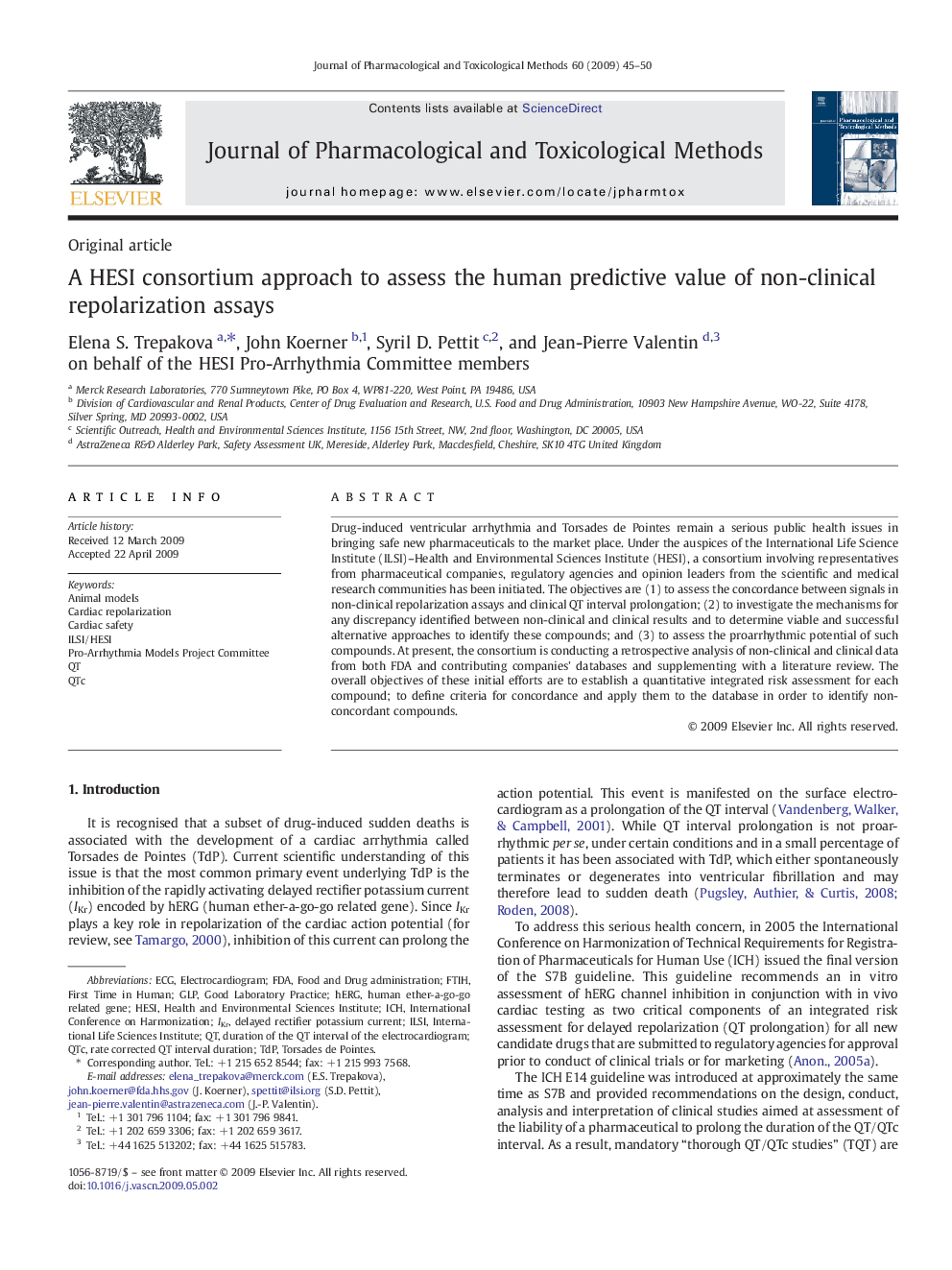| Article ID | Journal | Published Year | Pages | File Type |
|---|---|---|---|---|
| 2549978 | Journal of Pharmacological and Toxicological Methods | 2009 | 6 Pages |
Drug-induced ventricular arrhythmia and Torsades de Pointes remain a serious public health issues in bringing safe new pharmaceuticals to the market place. Under the auspices of the International Life Science Institute (ILSI)–Health and Environmental Sciences Institute (HESI), a consortium involving representatives from pharmaceutical companies, regulatory agencies and opinion leaders from the scientific and medical research communities has been initiated. The objectives are (1) to assess the concordance between signals in non-clinical repolarization assays and clinical QT interval prolongation; (2) to investigate the mechanisms for any discrepancy identified between non-clinical and clinical results and to determine viable and successful alternative approaches to identify these compounds; and (3) to assess the proarrhythmic potential of such compounds. At present, the consortium is conducting a retrospective analysis of non-clinical and clinical data from both FDA and contributing companies' databases and supplementing with a literature review. The overall objectives of these initial efforts are to establish a quantitative integrated risk assessment for each compound; to define criteria for concordance and apply them to the database in order to identify non-concordant compounds.
